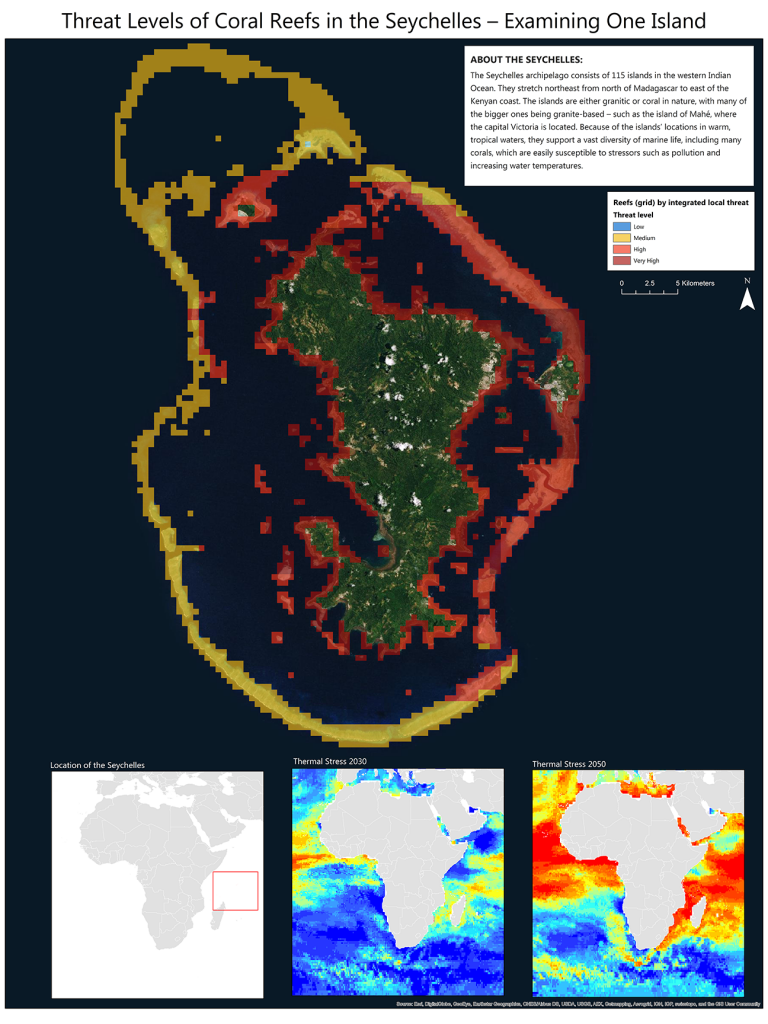
The Seychelles archipelago consists of 115 islands in the western Indian Ocean. They stretch northeast from north of Madagascar to east of the Kenyan coast. The islands are either granitic or coral in nature, with many of the bigger ones being granite-based – such as the island of Mahé, where the capital Victoria is located.
Because of the islands’ locations in warm, tropical waters, they support a vast diversity of marine life, including many corals. Coral reefs are fragile environments, however, and anything from pollutants in the water to a slight increase in temperature can damage them.
In 1998, what scientists refer to as the “Mass Bleaching” event occurred in coral reefs across the globe – unusually warm ocean temperatures that year led to many corals becoming bleached. Bleached coral occurs when the corals become stressed, and expel the algae living on them, causing the corals to lose their rainbow colors and turn white. Once the algae have left the corals, the corals now are left without their major food source, and are more susceptible to further damages from stressors and disease.

Continue on to: Spotlights – Books – Videos